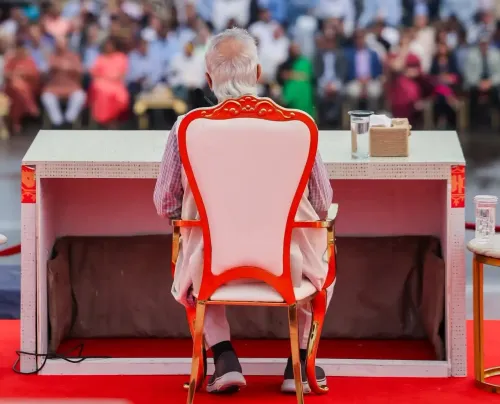What Priorities is the Laos Government Setting for Socio-Economic Growth?

Synopsis
Key Takeaways
- Laos is prioritizing socio-economic development to transition from LDC status.
- The government is enhancing infrastructure, particularly road repairs.
- Collaboration among ministries and local authorities is essential.
- Key projects like the Road No 13 South Restoration are underway.
- The focus is on sustainable practices and regional connectivity.
Vientiane, November 20 (NationPress) The government of Laos has recently held a high-level meeting aimed at defining priorities for the nation's socio-economic development strategy. This initiative is crucial for aiding Laos' transition from its status as a Least Developed Country (LDC) and for promoting its sustainable development objectives.
The 14th High-Level Round Table Meeting took place in the capital, Vientiane, themed "Strengthening Development Partnerships for Effective Implementation of the 10th National Socio-Economic Development Plan for 2026-2030," as reported by the Lao Ministry of Finance and Xinhua News Agency.
During his address, Prime Minister Sonexay Siphandone urged participants to enhance collaboration, foster an independent and self-sufficient economy, and focus on human resource development, social welfare, environmental conservation, disaster risk management, and regional integration.
Additionally, the government is actively pursuing infrastructure enhancements, especially road repairs and quick restorations of damaged routes, to boost transportation, tourism, and national socio-economic growth.
At a press briefing, Sommad Pholsena, Vice President of the Laos National Assembly (NA), outlined the NA's recommendations for the government's socio-economic development strategy. He highlighted the urgency of accelerating infrastructure upgrades, urging the government to allocate budget resources for the repair of damaged roads, improve public travel and tourism, and implement stringent measures against overweight trucks.
In a recent session of the Laos National Assembly's ninth legislature, Minister of Public Works and Transport Leklay Sivilay announced a plan for relevant authorities to focus on urgently repairing severely damaged national highways.
Local governments have been granted the authority to select qualified firms and enter into MoUs for assessments, feasibility studies, and design work, paving the way for construction to commence in 2026. Some provinces have already initiated these agreements.
Moreover, several key initiatives are progressing. A significant milestone was reached with the signing of a Memorandum of Understanding (MoU) on November 4 for the Road No 13 South Restoration and Rehabilitation Project. This project will focus on a 38-km section from Khammuan to Savannakhet province, involving surveys, feasibility studies, and engineering designs to ensure a load capacity of 11 tonnes per axle. The goal is to enhance transportation for both commercial and public use, improve durability, guarantee safe travel, strengthen connectivity, and stimulate local economic growth in this essential southern corridor.









